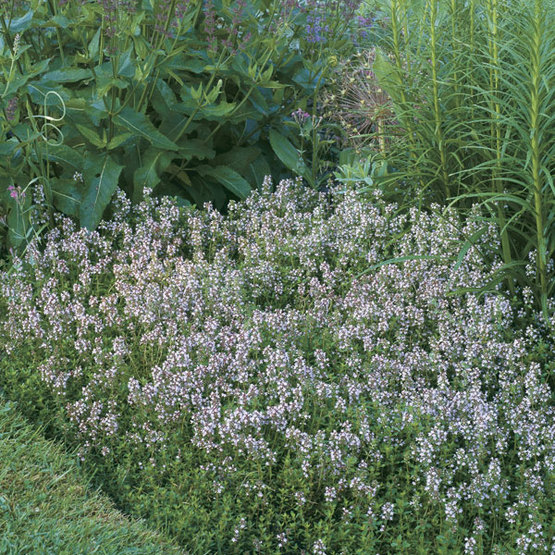
Photo/Illustration: Jane Grushow
On early summer evenings, I follow the bees and butterflies to carpets of white, pink, and lavender thyme flowers that blanket pathways and rocky nooks in my garden. I can’t resist stroking the colorful mats, releasing a heady perfume that lingers in the evening air. It’s relaxing and soothing—a bonus for any hardworking gardener.
Thymes are diminutive perennial herbs that grow either upright as small, erect shrubs or low as creeping mats. Colorful and fragrant, they are versatile accent plants. Suitable for any dry, well-drained spot—such as patios, walks, rock gardens, stone walls, or pond borders—they cascade, drape, and mound in soft mats. Thymes are precious jewels for your garden—the final accessory.
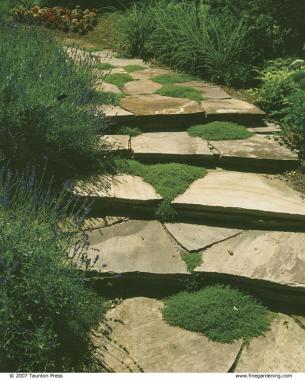
Photo/Illustration: Lee Anne White/Positive Images
For the past 20 years, I have grown many thymes at my Pennsylvania herb farm, and I add new ones every season. More than 150 thymes are commercially available, with hardiness ranges from USDA Hardiness Zones 2 (–50°F) to 10 (30°F). Most are hardy to Zone 5 (–20°F) with winter protection.
My favorites are the creeping thyme cultivars, which present a wealth of choices for unusual, aromatic ground covers. They are separated into two groups: prostrate, which grow less than 3 inches high and resemble lush, sun-loving mosses; and mounding, which form undulating, green or silver carpets that are more than 3 inches high. I especially enjoy the prostrate varieties planted among paving stones in paths and terraces that spill into my perennial borders. When I tread on them, their distinctive fragrance adds a sensual dimension to a garden stroll.
For more thyme varieties, check Fine Gardening‘s Plant Guide.
Scent under foot and in the perennial border

Photo/Illustration: John Glover
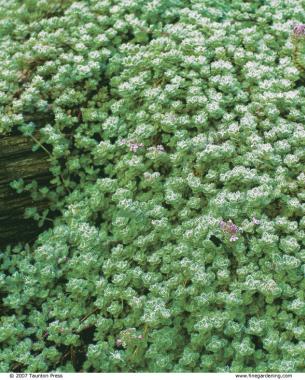
Photo/Illustration: Delilah Smittle
Creeping thymes enliven the transition from pathways to perennial beds, where they spread into my wide borders. Because they are resilient, I walk on the mats to weed, deadhead, and complete other maintenance tasks. The aromas make my work very pleasant. Under caraway thyme (Thymus herba-barona ‘Minus’ and ‘Longwood’), I plant summer-flowering bulbs like alliums, lilies, and spider lilies, which grow happily without being smothered by the thymes.
Thymes are always at home in rock gardens, walls, and on rocky slopes. Many will meander down crevices, cascade over boulders, or form tight, sculptural mounds. Slopes and inclines in my garden feature ‘Pink Chintz’, ‘Bressingham Seedling’, ‘E. B. Anderson’, and ‘Gold Stream’ thyme. Along north-facing, railroad-tie steps, I grow T. pseudolanuginosus, a woolly thyme with soft, fuzzy, gray foliage. It tolerates the shady conditions but is far less vigorous than other thymes grown in sunny locations.
Thymes blend well with other plants, too. Perennials such as betony, bee balm, sage, allium, pincushion flower, artemisia, yarrow, and iris make interesting companions. I like to grow the betony and drumstick allium underplanted with a creeping thyme. The allium pokes up through the low, glossy mat of thyme and among the fuzzy betony leaves, where its whiplike foliage contrasts nicely. In another part of my border, a creeping thyme flows around some dwarf iris and ‘Moonshine’ yarrow, creating a composition of wildly different foliage textures.
Dwarf conifers and woody shrubs underplanted with thyme are less often seen but quite lovely. I allow the thyme to spread around the base of the taller specimens; if the thyme starts to creep up and into the shrubs, I just clip it back. In my garden, a flat-topped, dwarf blue spruce is paired with a low, white-flowering thyme, T. praecox ssp. arcticus ‘Alba’. The spiky texture and silver-blue color of the spruce are complemented by the soft, neat mounds of thyme. When underplanting deciduous shrubs with thyme, I always remove any fallen debris to prevent the thyme from rotting under damp leaves.
Good drainage encourages a vigorous carpet of thyme
Native to the Mediterranean region, thymes prefer dry conditions and average garden soil. Too much water and heavy soil cause thymes to rot. When planting, I add sand or gravel to the soil to improve drainage. A top dressing or mulch of sand or gravel helps to thwart frost-heaving of the plants in winter and diverts water away from the stems and leaves. In areas with high rainfall, planting thymes on rocky slopes helps alleviate drainage problems, but it is also important to select the right cultivar for your conditions.
Most thymes prefer full sun, although a few golden or variegated cultivars, along with woolly thyme and T. praecox ssp. articus, tolerate partial shade. Watering and fertilization are rarely necessary once plants have become established. In fact, dry conditions improve plant vigor, and poor soil increases aromatic oil production, making thymes more fragrant.
Humidity is thyme’s chief enemy. Damage appears as tattered foliage and naked branches. My Southern gardening friends would say that thyme has a tendency to “melt out,” an apt description of humidity’s effect. Unless you have a site with excellent air circulation, avoid thymes with woolly or hairy foliage, since they are most susceptible to humidity-induced rot. If your plants suffer from this, remove any affected foliage, then mulch with a layer of sand to reduce the moisture near the plant and to fill unsightly gaps.
Thyme at a glance
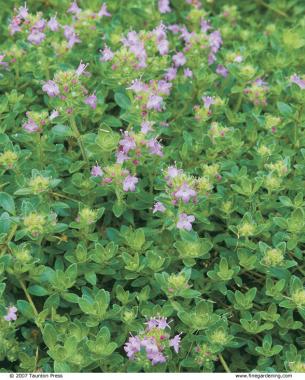
Photo/Illustration: Jane Grushow
Thymus
(TIME-us)
- Small perennial herbs noted for their fragrant, narrow leaves and delicate flowers.
- Thymes thrive in sunny locations with dry, gritty soil. They rarely need watering or fertilization.
- Although hardiness varies from USDA Hardiness Zones 2 to 10, most thymes are hardy to Zone 5 with winter protection.
- Prostrate thymes grow to 3 inches high, spreading to 2 feet. Mounding thymes exceed 3 inches but are considered low-growing ground covers.
Cover more ground by dividing your thyme
Both creeping and mounding thymes are most easily and reliably propagated by division. In spring or fall, I slice small clumps, roughly 2 inches square, from an established plant and either pot them or plant them in another site.
In addition to division, mounding thymes may be propagated by stem cutting. Take the cuttings in the fall, root them in damp builders’ sand, and the new plants will be ready for the garden the following spring.
Although it may also be propagated by seed, thyme is slow to germinate and typically takes three years to reach maturity. Furthermore, cultivars grown from seed may not have the desired characteristics of their parents.
A few favorites for form and fragrance
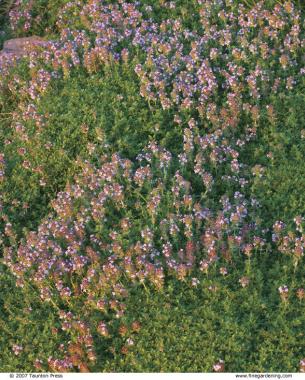
Photo/Illustration: Jane Grushow
Durability, growth habit, color, and fragrance are important to consider when selecting thymes for ground covers. My favorite cultivars grow reliably in our Pennsylvania humidity and are relatively long-lived.
On my brick walk, T. praecox ssp. arcticus ‘Annie Hall’ forms a prostrate mat spreading nearly 15 inches across. Its small, narrow leaves are medium green, covered in June with tiny, dark pink flowers. Withstanding the foot traffic on my brick patio are a mix of red, white, and pink flowering cultivars. They tolerate the partial shade of eastern and northern exposures.
T. praecox ssp. arcticus ‘Pink Chintz’ grows flat against the soil. A blanket of prominent, pink flowers covers its shiny, green leaves in summer.
T. doerfleri thrives on the flagstone apron of my greenhouse in the hot, western sun. Similar in habit to ‘Annie Hall’, T. doerfleri has clear pink flowers that appear in June above narrow, green leaves. It forms a flat carpet and remains attractive throughout the season. A cultivar, T. doerfleri ‘Bressingham Seedling’ is another favorite of mine for its larger, rounded, hairy leaves. It drapes beautifully over rocks, landscape timbers, or inclines.
T. ‘Doretta Klaber’ is one of the finest dwarf thymes. The minute, hairy, green foliage of this plant forms a tight mat that is only 1 inch high in bloom and spreads to 12 inches across. Dark pink flowers appear in spring. Useful in rock gardens, on slopes, or in containers, ‘Doretta Klaber’ has foliage that turns mahogany in winter.
T. ‘Archer’s Gold’ is an evergreen cultivar. Brilliant, golden foliage—most pronounced in cool weather—is its best feature; small, pink flowers appear in late summer.
A lemony scent and masses of pink flower spikes characterize T. ‘Pink Ripple’. Its shiny, light-green foliage quickly forms an 18-inch prostrate mat. In my garden, ‘Pink Ripple’ creeps around allium and iris, making a soft, scented carpet underfoot.
Thymes are versatile, colorful, and fragrant plants, offering masses of delicate, starlike flowers. Tuck a thyme into a dry wall, stone walkway, or rock garden. Use it as a ground cover or as an edging for a perennial border. These hardy little plants add swaths of color and fragrance in unexpected places.
Fine Gardening Recommended Products
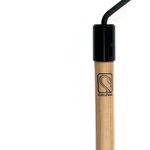
CobraHead® Long Handle Weeder & Cultivator Garden Tool
Fine Gardening receives a commission for items purchased through links on this site, including Amazon Associates and other affiliate advertising programs.
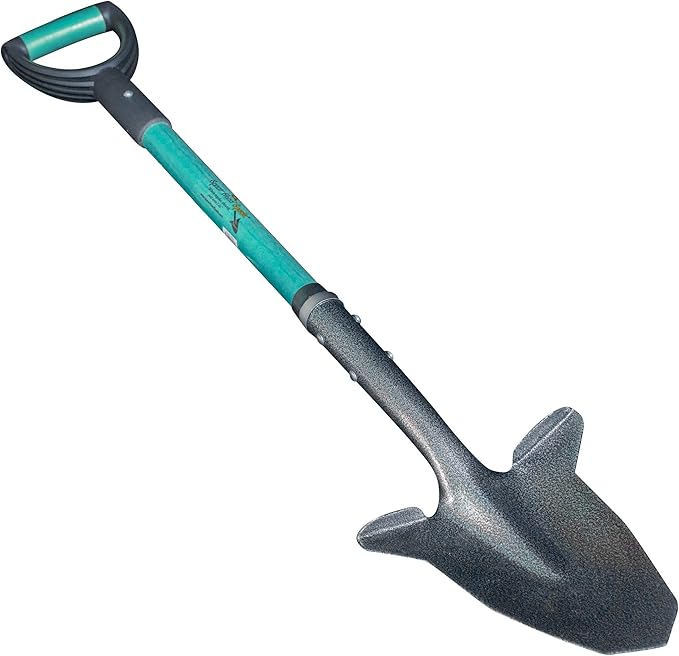
Spearhead Shade Gardening Shovel with Steel-Reinforced Fiberglass Handle
Fine Gardening receives a commission for items purchased through links on this site, including Amazon Associates and other affiliate advertising programs.
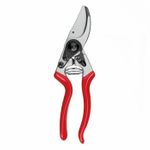
Felco Pruning Shears (F 9) - High Performance Swiss Made One-Hand Left-Handed Garden Pruners
Fine Gardening receives a commission for items purchased through links on this site, including Amazon Associates and other affiliate advertising programs.

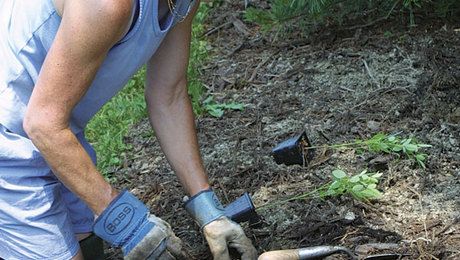
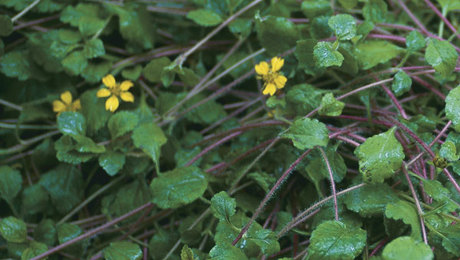

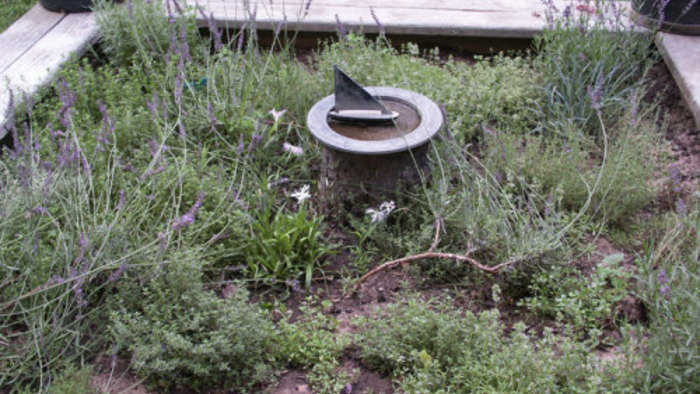













Comments
I am glad to hear that the author is from PA. Good article. Could you design a garden for us? We live in Paoli PA.
Thanks
Hi, wondering if I can get some advice on a suitable variety of creeping thyme for a vineyard. It needs to be a low variety and dense to prevent weeds. We want to make the vineyard bee friendly and we would be planting it in the rows around the base of the vine.
Log in or create an account to post a comment.
Sign up Log in